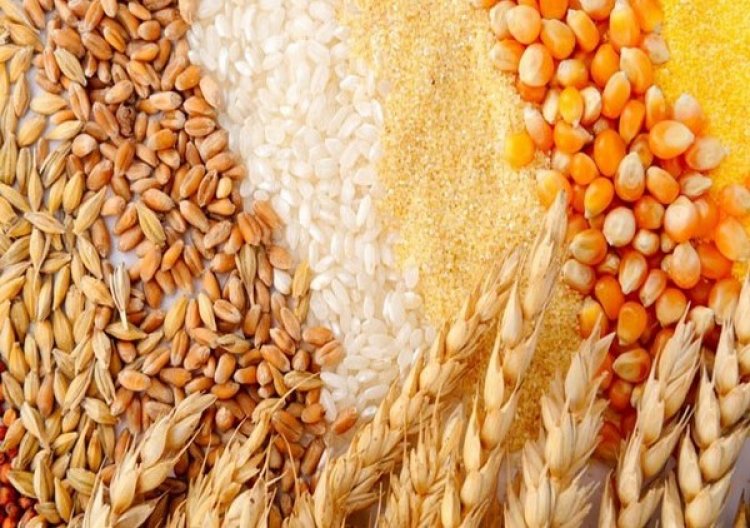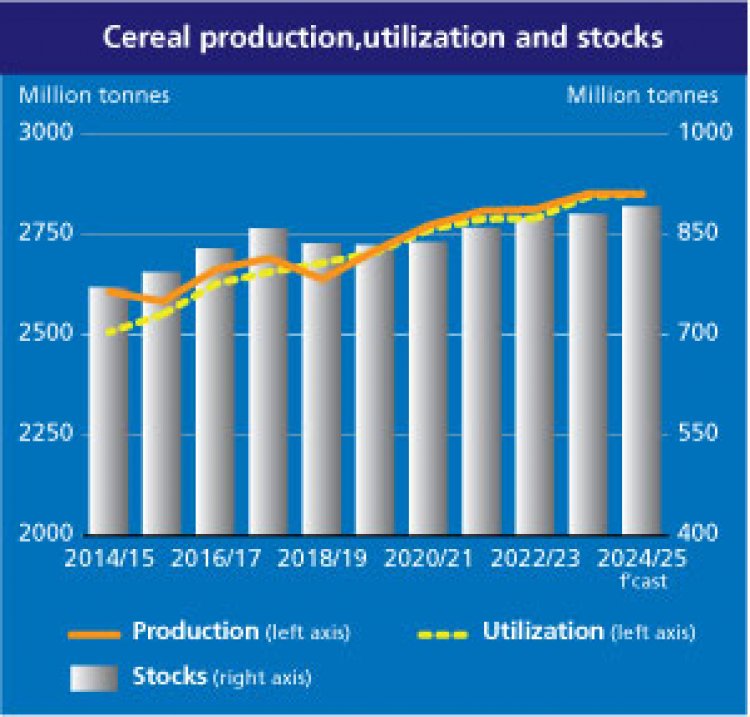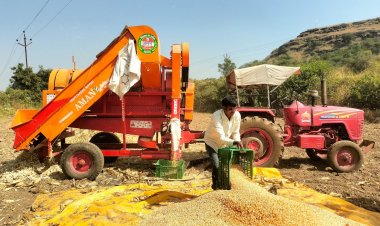FAO trimmed forecast for global cereal production, cereal trade likely to contract in 2024-25
FAO has raised its forecast for global wheat output in 2024 as well as that for rice, which is now projected to reach an all-time high of 537 million tonnes.

FAO’s latest forecast for world cereal production in 2024 has been scaled back by 2.8 million tonnes in September compared to the projection from July, linked to reduced prospects for coarse grain crops. This latest revision places the 2024 global cereal outturn at 2,851 million tonnes, almost on par with the previous year’s output.
The new Cereal Supply and Demand Brief, issued on Friday, attributed its revisions to reduced harvest expectations for coarse grains, including maize, primarily due to hot and dry weather conditions in the European Union, Mexico and Ukraine, which have diminished yield prospects. The production forecast for global coarse grains in 2024 has been adjusted downward to 1,523 million tonnes, a reduction of 7 million tonnes compared to July, and now sitting 9.4 million tonnes (0.6 percent) below 2023’s level.
FAO’s production forecast for the world wheat output stands at 791.4 million tonnes, up 2.3 million tonnes from the previous projection in July, and now nearly 3 million tonnes higher year on year. Most of the recent increase stems from better-than-expected results in the United States of America, with the winter harvest nearly complete. At the same time, smaller upward revisions have been made to production forecasts in China (mainland) and Argentina. Partly offsetting these upturns, downward adjustments have been made to the wheat production forecast in the European Union, on account of overly wet conditions, and in the Russian Federation where persistent adverse weather conditions have curtailed yields.
FAO has raised its global production forecast for rice by 1.9 million tonnes since July, mostly due to an upward revision to historical output figures for Bangladesh. However, a higher-than-previously-anticipated winter-spring harvest combined with a strong pace of summer-autumn plantings also bolstered output prospects for Vietnam. As a result of these changes, world rice production in 2024/25 is now anticipated to reach 537.0 million tonnes, up 1.0 percent from 2023/24 and an all-time high.

The forecast for world cereal utilization in 2024/25, now pegged at 2 852 million tonnes, up 0.2 percent from the 2023/24 level, has been lowered by 4.7 million tonnes since July. Total utilization of coarse grains is forecast to rise by 0.2 percent to 1 526 million tonnes in 2024/25 despite a downward revision this month of 3.8 million tonnes, largely driven by lower anticipated feed use of barley (mostly in Canada) and sorghum (mostly in China (mainland)).
The forecast for world cereal stocks by the close of the 2025 seasons has been cut by 4.5 million tonnes since July, declining to 890 million tonnes, but still 1.2 percent above their opening levels. With the new forecasts, the global cereal stocks-to-use ratio in 2024/25 would remain nearly unchanged from last season at 30.7 percent, continuing to indicate adequate supply prospects in the new season. This month’s downward revision in world cereal stocks is attributed to a 10.6 million tonne cut in the global coarse grain stocks forecast. The biggest reduction is for maize stocks, stemming largely from lower inventories in the European Union, as well as in Ukraine, due to reduced production prospects.
International trade in total cereals is now pegged at 485.6 million tonnes, representing a 3.3 percent decline from 2023/24, led mostly by lower traded volumes in coarse grains.Despite upward revisions for maize and wheat trade, international rice trade is forecast to decline slightly, reflecting reduced demand.
This month’s FAO report highlights the ongoing challenges posed by unpredictable weather and geopolitical disruptions, particularly the war in Ukraine, which continue to shape global food production and trade patterns.



 Join the RuralVoice whatsapp group
Join the RuralVoice whatsapp group








































